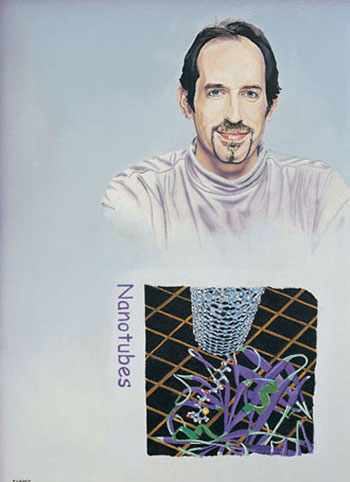Are you a journalist? Please sign up here for our press releases
Subscribe to our monthly newsletter:

They're incredibly tiny – a millionth of a millimeter in width – and yet are expected to accomplish a multitude of spectacular feats. These relatively new materials, called carbon nanotubes, have all the potential: they're harder than diamonds, can conduct electricity, are elastic and are also remarkably strong.
Dr. Ernesto Joselevich of the Materials and Interfaces Department has shown that these tiny giants make matchless probes into the miniature world, and has used them to produce today’s highest-resolution live images of functioning DNA (whose width is a few nanometers). Now he sees a promising role for nanotubes in an altogether different field: computers. “Computer chips made of nanotubes could be thousands of times smaller and a hundred times faster,” he says. And so he's growing nanotubes in his lab (the method of growth, published four years ago, is being increasingly adopted by scientists in the field): He scatters a few iron particles (he calls them “seeds”) on a surface, blows in a substance similar to cooking gas, and almost instantaneously the gas crowds around the seeds and solidifies into carbon nanotubes.
If one could grow nanotubes to intersect with one another, suggests Joselevich, one could make a computer chip: Each intersection could be a computer bit – that is, a “letter” in the computer language. Recently he devised a way to encourage growth in a certain direction, using electric fields. This method could also be used to control the direction of growth of any material that can be used as a wire – from metals to protein fibers – and could have a wide range of industrial as well as biomedical applications.